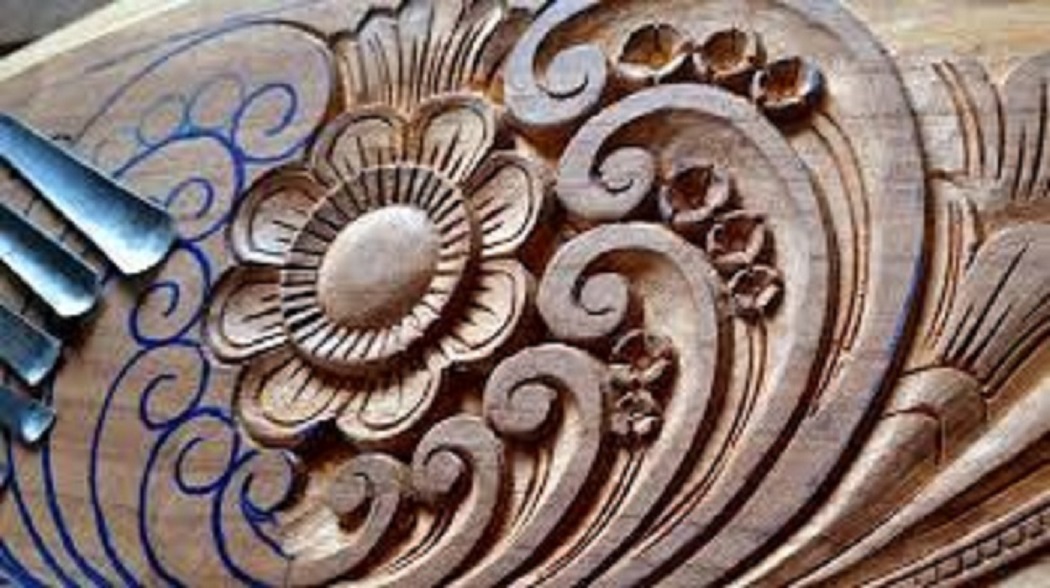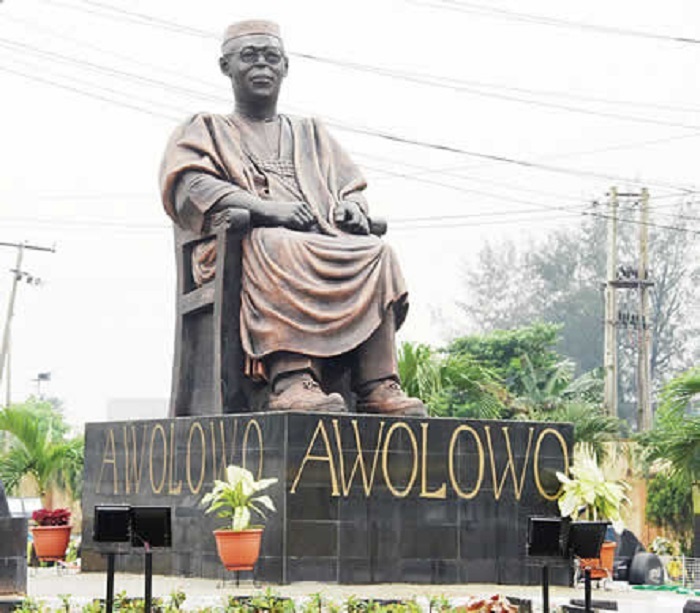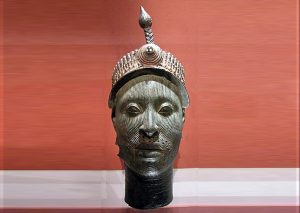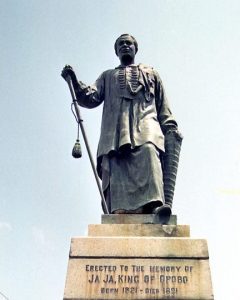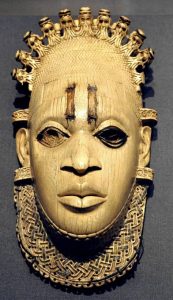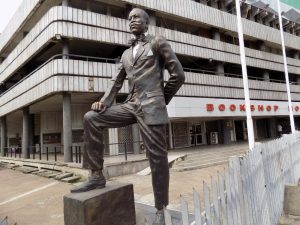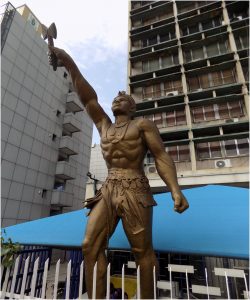
Photo Credit: Researchgate
Queen Amina Statue is an equestrian statue to honour Queen Amina, a Hausa Warrior Queen of Zazzau wielding a sword. Designed by Ben Ekanem in 1975 for the Second World Black and African Festival of Arts and Culture (FESTAC ’77); it used to be at the entrance of the National Arts Theatre in Iganmu, Lagos State but due to weathering, it was moved by the authorities of the National Theatre for possible restoration.
Queen Amina was born as Aminatu in 1533 to a royal family. Her grandfather was King Sarkin of Nohir, and her grandmother’s name was Marka. Her father was King Nikatau of Zazzau, the 22nd ruler of Zazzau and Queen Bakwa Turunku.
Amina was the eldest of three children. She had a brother named Karama and a sister named Zariya, after whom the modern city of Zaria in present-day Kaduna State of Nigeria got its name by the British colonialists.
While growing up in the palace, Amina trained with the royal guards to hone her military skills.
Amina’s parents died in 1566, and her brother, Karama, was named the King of Zazzau because, according to tradition, the male child has to succeed the father. During Karama’s reign, Amina became the lead warrior of the kingdom’s army.
For ten years, her successes across the region gained her a fierce reputation and personal wealth outside of her royal family connection.
In 1576, Karama died and Amina was crowned Queen of Zaria.
Suitors lined up daily, bringing gifts, including offers of 10 Makama slaves. It is on record that the Emir of Kano offered her 50 bags of white and blue cloth, 50 female slaves, and 50 male slaves, but she was resolute not to be married because this would weaken her as a ruler.
In her efforts to provide a safe passage for Hausa traders, Queen Amina expanded the kingdom’s borders through a series of successful strategic battles within three months of her reign.
She introduced the use of protective armour to the Zazzau Army, led her army of 20,000-foot soldiers and well-trained and fearsome 1,000 cavalry troops to battle, conquering towns to the north and southward to the great River Niger — including Idah and Nupe Land — and up to Kano in the north.
During her reign, Zaria dominated trade routes connecting western Sudan with Egypt to the northeast and Mali to the north.
Queen Amina boosted her kingdom’s wealth and power by collecting tributes from vassal states in the form of gold, kola nuts and male slaves. Because her people were talented metal workers, She introduced metal armour, iron helmets and chain mail, to her army.
Amina built walls around her camps and conquered cities. Many of which stand in contemporary northern Nigeria.
Oral tradition has it that she had lovers in each of her captured cities after each battle, after their night together; she would have the (un)fortunate man killed in the morning.
Queen Amina was a great ruler with fierce military exploits who reigned for 34 years. She died in a battle near Bida, in 1610 at the age of 77. She was never married and had no child.
Queen Amina College in Kaduna state and female dormitories at the University of Lagos and Ahmadu Bello University are in her honour.
What’s your thought about this story?


